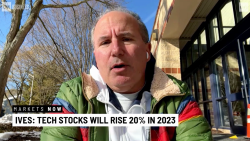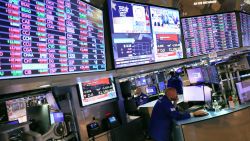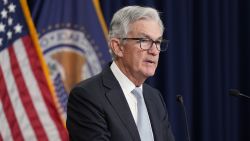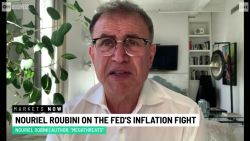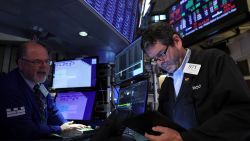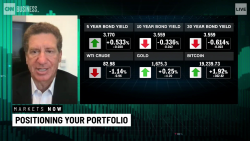The back-to-back, huge market rallies of last week may seem like a distant memory to investors after stocks slid for the past four days and finished mixed Tuesday.
The Dow snapped its losing streak, rising more than 35 points, or 0.1%. It was a topsy-turvy trading session, with the Dow gaining more than 400 points at one point and falling as much as about 130 points earlier in the day.
The S&P 500 and Nasdaq ended the day lower after briefly entering positive territory in midday trading. The S&P 500 slid 0.7% and the tech-heavy Nasdaq fell 1.1%. It was the fifth consecutive day in red for both indexes.
There was little news to justify the seesaw action in stocks. No major companies reported earnings and there were no significant economic reports either.
Worries about inflation — and the increased likelihood of even more huge interest rate hikes from the Federal Reserve — have been spooking Wall Street again and sending long-term bond yields higher.
Recession fears are back with a vengeance following dour comments about the global economy from the likes of JPMorgan Chase (JPM) CEO Jamie Dimon and the International Monetary Fund in the past two days.
Anxiety is at a fever pitch as major American companies prepare to report earnings for the third quarter and perhaps give a glimpse into what they’re expecting for the fourth quarter and 2023.
The continued surge of the US dollar could put a damper on profits for multinational blue chip companies. And few see an end in sight for the greenback’s rally.
“Federal Reserve policy will continue to buoy the US dollar, as tightening will likely continue without a pivot to easing until material evidence of labor market weakness emerges or inflation returns much closer to target,” UBS Asset Management strategists Evan Brown and Lucas Kawa said in a report Tuesday.
So it’s reasonable to wonder if the market still has more room to drop before finally hitting a much hoped for, but seemingly elusive, bottom. The S&P 500 and Nasdaq both hit new 52-week lows on Tuesday and the Dow is not far from one either.
More volatility ahead, but history suggests worst may soon be over
But investors shouldn’t cavalierly dismiss the market’s big surges from last week, even though the bears seem to be back in control.
History shows that when stocks enjoy gains as dramatic as the ones from last Monday and Tuesday, that could be a sign that a bear market bottom may soon be near. The S&P 500 surged a combined 5.7% those two days.
According to a tweet from Charles Schwab chief investment strategist Liz Ann Sonders that shows data going back to 1960, the S&P 500 was higher six months later eleven out of fourteen times following days where the S&P 500 enjoyed consecutive rallies of more than 2.5%.
That included three instances from late 2008 when market volatility was at a peak during the Global Financial Crisis.
Another report from Bespoke Investment Group shows that stocks do even better in the 12 months after two huge up days. The S&P 500 was up nearly 15% one year following massive back-to-back rallies, compared to normal historical gains of just 9%.
Still, the big swings in the market show just how nervous investors are. The CNN Business Fear & Greed Index, which looks at the VIX (VIX) volatility gauge and six other measures of market sentiment, is at Extreme Fear levels.
What market swings mean for you
But when investors are so universally gloomy, that often presents good buying opportunities for the long-term.
Louis Navellier, chairman of Navellier & Associates, noted in a report that last week’s market pop was due in part to bearish investors rushing to buy stocks to close out short positions, or bets that the market would go down.
“That short covering rally we saw on the first two days of October is a big deal. Short covering rallies are how markets reverse,” he said, noting that stocks “went from being oversold last week to slightly overbought.”
So it’s not a huge surprise to see the market unwind and give back a chunk of the gains from early last week. But it’s also worth noting that the S&P 500 is still slightly higher than where it closed on September 30, despite the recent losses. In other words, investors would have been best to sit tight.
Indrani De, FTSE Russell’s head of global investment research, cautions that investors shouldn’t overreact to daily market moves. You could miss the rallies like the ones from last week if you’re constantly trying to only buy when you think the market has it a bottom and sell when things appear bleak.
De conceded that “in periods of high economic uncertainty … markets will remain in a high volatility regime.” But she urged investors to look past the bumps.
“It is not about timing the market,” De said. “It’s about time in the market. That is very important.”



